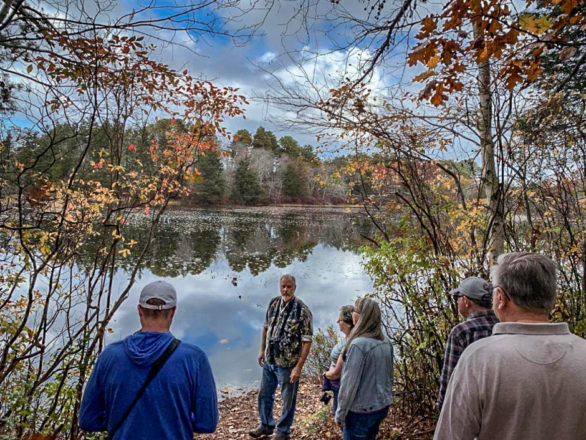|
The morning of November 5th dawned sunny and unusually warm at a balmy 66 degrees. It was the perfect weather for the Trust’s guided trail walk at the Riverhead cranberry bog with naturalist John Turner. Part of Suffolk County’s parks system, the 165-acre Cranberry Bog Nature Preserve is located off Lake Avenue and although we were all interested in finding cranberries, we learned that they are scarce these days and are certainly not to be found along the trails.
We also learned from John that he knew a lot about the history of cranberries! Farming for cranberries started on the East Coast around 1820 in the Cape Cod area of Massachusetts where watery bogs were prevalent. Land that was regularly underwater was the perfect growing conditions for these low-mounding plants and farming cranberries provided a steady source of employment for many people. By the late 1800’s, dozens of cranberry farms were operating on Long Island because the environment of the Long Island Pine Barrens perfectly suited their needs. The Woodhull, Brown and Davis bogs were the largest and biggest source for cranberries grown on Long Island, and the Peconic River played a major role in providing water to the bogs. This was facilitated by the creation of trenches to move water to the cranberries during dry periods. Harvesting cranberries was a labor-intensive endeavor, and the Long Island industry did not have the economies of scale of cranberry operations in New Jersey and Massachusetts so that by the late 1970’s, cranberry farming on Long Island was a thing of the past.
——————-
|







